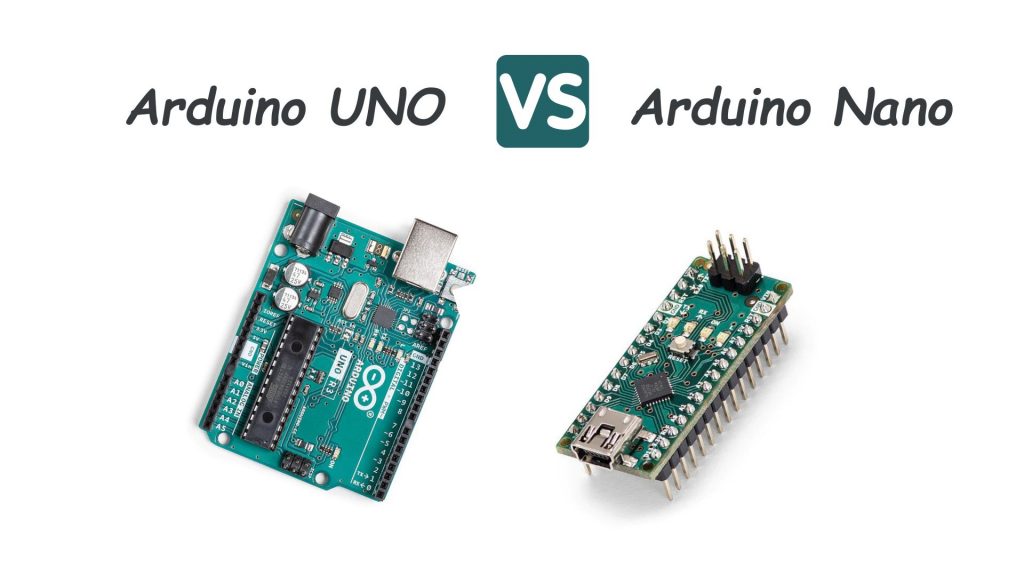There is a wide range of Arduino boards available which we can use depending upon the usage. these boards can be classified with many factors like form factor, size, power consumption, memory, input pins, output pins, communication channel etc. In this Arduino guide, we are going to compare Arduino UNO with Arduino Nano.
Arduino UNO VS Arduino Nano – Comparison

Arduino family has many microcontroller boards with different features, specifications and form factors. Among them, the most popular, beginner friendly and cost effective are Arduino UNO and Arduino Nano. Arduino UNO and Arduino Nano have many similarities and differences as well. In this guide, we are going through both of them.
Size and Form Factor
The physical difference between Arduino UNO and Arduino Nano is the size and the form factor. Arduino Nano is compact and smaller in size than the Arduino UNO. The size of Arduino UNO is 2.7” x 2.1” while the size of Arduino Nano is 1.7” x 0.73”.
Microcontroller Chip
Arduino UNO comes with Atmel ATmega328 microcontroller while Arduino Nano Comes with Atmel ATmega328P. Both microcontroller chips are similar except the P version in Nano comes with some extra features of Serial Communication.
Digital I/O Pins
There are 14 digital pins in Arduino UNO out of which 6 are PWM pins. 20mA current can flow through each of the I/O pin. While there are 14 digital pins in Arduino Nano out of which 6 are PWM pins. 40mA current can flow through each of the I/O pin
Analog Pins
There are 6 Analog pins in Arduino UNO and there are 8 Analog Pins in Arduino Nano.
USB Port
Arduino UNO has a regular USB Port for communication. While Arduino Nano has a mini USB port for communication.
Flash Memory
Arduino UNO has 32KB flash memory with 0.5KB for bootloader. While Arduino Nano has 32KB flash memory with pre-installed bootloader.
Programming
Both Arduino UNO and Arduino Nano can be programmed with the help of Arduino IDE – integrated development environment. But there is one difference. The program written for Arduino UNO will work on the Arduino Nano but the program written for Arduino Nano may not work on Arduino UNO as there are additional I/O Pins in Arduino Nano.
Comparison Table
| Factors | Arduino UNO | Arduino Nano |
| Size | 2.7” x 2.1” | 1.7” x 0.73” |
| Weight | 25g | 7g |
| Digital I/O Pins | 14 (6 PWM Pins) | 14 (6 PWM Pins) |
| Analog I/O Pins | 6 | 8 |
| DC Current per I/O Pin | 20 mA | 40 mA (I/O Pins) |
| USB Port | Regular USB Port | Mini USB Port |
| Clock Speed | 16MHZ | 16MHZ |
| Flash Memory | 32KB (without bootloader) | 32KB (Pre-installed Bootloader) |
| Static Random Access Memory (SRAM) | 2KB SRAM | 8KB SRAM |
| EEPROM | 1KB | 1KB |
Conclusion
In this guide, we compare the Arduino UNO and Arduino Nano. Both of the boards are pretty similar except the size and some technical specifications. Arduino Nano is compact and smaller in size with some additional features and extra Analog I/O pins, otherwise both of the boards are quite similar.
